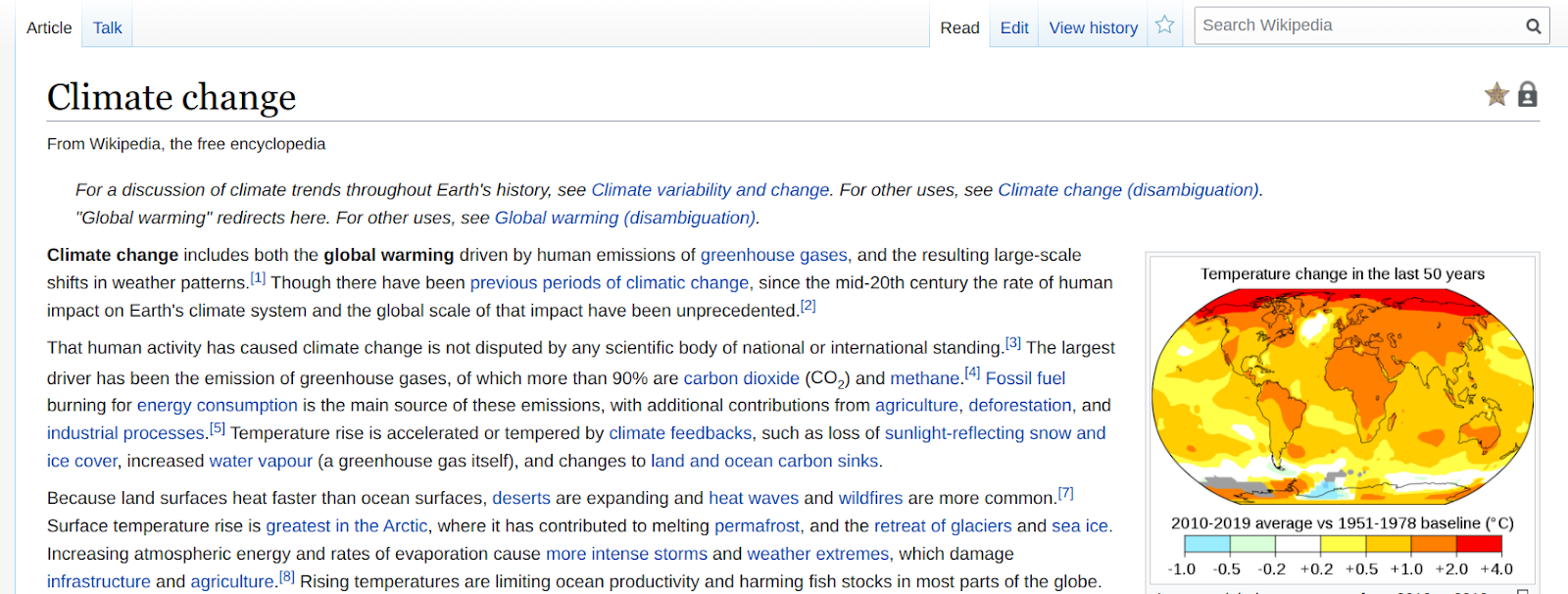3. Verifiability
The verifiability of a statement via respected sources is a basic criterion for orientation in open educational resources – especially anonymous ones – based on MediaWiki software.
Thanks to the verifiability of individual statements, an anonymous resource to a certain degree becomes non-anonymous thanks to the cited information it contains. In universities, for example, students are often taught not to cite Wikipedia. Ideally, this should not be necessary. If articles on Wikipedia are written well (according to their rules), each statement that is not publicly known (and thus usable for university purposes) should be properly cited. The user should then not cite Wikipedia, but the source cited within it.
But, if we like a certain formulation on Wikipedia that is not properly cited, we can look at who entered it into Wikipedia. The special Wiki Blame tool is used for this. In some cases, encyclopedia creators act non-anonymously (for example the well-known Czech Wikipedist and Charles University professor Jan Sokol) and can be cited – instead of Wikipedia, e.g. as the author Jan Sokol. The MediaWiki software environment makes it possible to look up every single edit and its author (including their number of successful edits, etc.). In a certain sense, it is less anonymous than articles that list a number of authors in which it is unclear who wrote what. With MediaWiki software resources, we have a detailed overview of all the activities of a given user.
Another problem with referencing/verifiability is how to cite. Below many articles, we see a list of references and used literature that was used during the creation of the text. However, a problem arises when we want to find where a certain statement comes from. We don’t know which of the given sources it comes from, if at all, or whether the author was only using his/her own knowledge. Although for the writer it is often the easiest option – i.e. rather than citing statements directly in the text – careful citation gives the reader another dimension of usability for the resource and it becomes crucial at various educational levels (e.g. at university) for the potential use of the given information.
Proper citation using respected sources in a given field is what heightens the text’s quality (in the sense of the verifiability of information). A similar practice applies, for example, to prestigious scientific papers, in which the authors often avoid making baseless statements in sections like the introduction, and thus the majority of statements are those that are backed by references (or they are the subsequent interpretation of these statements by the authors of the articles). A similar practice applies to the best articles on English-language Wikipedia, which are also characterized by the fact that they are properly cited (see the Figure below)
Figure showing best practices in citing the best articles on English-language Wikipedia in the introduction of the article “Climate change”.

Another aspect we can use to help us orient ourselves while using OER WMS is the degree of respect for the used sources. In the case of university education, this differs from field to field. However, it is generally true that sources respected by the academic community such as scientific books or articles in scientific journals should be cited rather than reports from the media. For better orientation in the hierarchy of resources, Eaton’s Hierarchy of Sources may be helpful (Table below).
Table. A table of respected sources for teaching students, which, after editing, can be useful for the creation of OER WMS on a university level in other fields.
